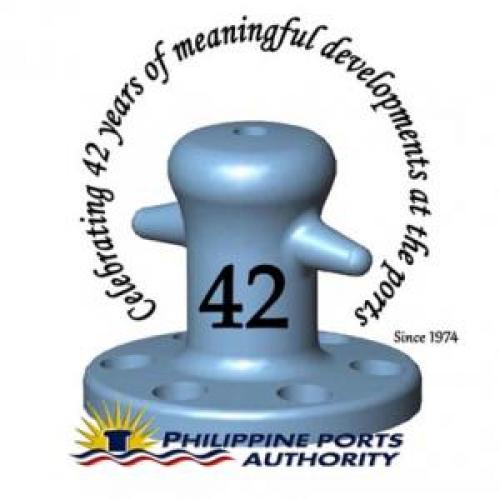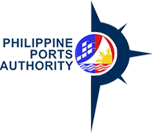
MANILA, JULY 11, 2016—The Philippine Ports Authority (PPA) is turning another chapter in its corporate life as it celebrates its 42nd Founding Anniversary today beaming with hope and pride with the entry of the new administration.
Armed with a new Vision that ‘By 2020, PPA shall have provided port services of global standards’, officers and staff, are ecstatic with this promise of better public service through reduced red tape in dealing with the agency resulting in more productivity and efficiency for the entire agency.
As what newly installed PPA General Manager Atty. Jay Daniel R. Santiago announced during his first ever flag raising ceremony, the marching order for the state-owned agency will be adopting a new work culture anchored on transparency and service in accordance with the battle cry of President Rodrigo R. Duterte.
Nonetheless, Santiago assured that adopting a new work culture, PPA’s success implementing its duties and responsibilities in providing gateways to progress by connecting the 7,107 islands of the Philippines.
Accomplishments…
In the past 6 years, the PPA remained as one of the top performing agencies in terms of operations and revenues. It maintained its position in the ‘billionaires club of GOCCs’ in terms of dividends contributed to the national coffers to help in the implementation of the socio-economic programs of the Government.
From 2010 up to the end of the first semester of 2016, the PPA was able to provide adequate facilities and services to accommodate sustained increases in cargo throughput, vessels and passengers with an annual average increase of 6.11%, 2.74% and 3.74%, respectively.
The agency was also able to complete 251 projects which have, among others, increased berth, back-up areas, passenger seating capacity and Ro-Ro berths throughout the country at a combined cost of P9.8 billion. Specifically, Ro-Ro projects facilitated the carriage of goods and people, promoted domestic tourism, reduced cargo slippage by at least 50% and cost by 30%.
PPA has likewise maintained the ports under its control in optimal operating condition at all times resulting in sustained safety and revenue growth with an average annual increase of 10%.
Thirteen ports were also certified to Quality Management System (9001:2015) and to Port Safety, Health and Environmental Management System to promote transparency and safety while 83% of the PPA ports have been issued Certificates of Compliance by the Office for Transportation Security with the International Ships and Port Facility Security (ISPS) Code making them viable destination of vessels.
PPA was also able to streamline the requirements for common permits by reducing documents from an average of 8 to 2 documents is a 75% reduction in processing requirements, thus, reducing burden to applicants or ports users. It likewise approved a Terminal Management Policy that enabled PPA to veer away from percentage sharing in revenues from service providers to fixed concession fees which allowed port service providers to level up their operations by becoming terminal operators. PPA likewise developed an e-Permit system and implemented it in 12 baseports designed to facilitate application, processing and approval of common port permits by service providers.
PPA was also able to put its mark in the international scene after its Training Institute was recognized as a Regional Training Center in the Asean to deliver Sustainable Port Development Training Courses. PPA was also able to forge an agreement for networking and regional cooperation through the International Association of Ports and Harbors, Asean Ports Association, BIMP-EAGA, International Martiime Organization, UNCTAD, Asia-Pacific Economic Cooperation, APEC Port Services Network, Permanent International Association of Navigation Congresses and Organization of Economic Cooperation and Development.
The government-owned corporation has likewise supported the development of cruise tourism by prioritizing projects that are considered major nautical cruise arteries like that in Catagbacan in Bohol, Puerto Princesa, Caticlan in Aklan, and Currimao in the Ilocos Region.
In terms of personnel capacity building, the PPA Board allotted about P1 billion for a 10-year program to upgrade knowledge of port personnel to global standards which includes Post Graduate Studies at the World Maritime University on Maritime Affairs and a training program on Modern Port Management under the auspices of the United Nations Conference on Trade and Development.
For its social responsibility and good governance initiatives, the PPA continued to support the Government’s Anti-Trafficking Program through the operation of Halfway Houses or Bahay Silungan sa Daungan in selected ports and other Gender and Development projects. The agency has likewise continue to advocate “green” technology through the use of solar/renewable lighting system, waste recycling and compliance with environmental regulations in port development and operations.
On the other hand, one of the notable accomplishments for the period, was the elevation of the PPA to Class “A” status for Government Owned and Controlled Corporations (GOCC) based on the classification guidelines of the Government Commision for GOCCs (GCGs).
Being implemented…
In order to make sure that Philippine ports are responsive to current times specifically with respect to security threats and safety concerns, the PPA continues to improve the physical and operational structure of the ports.
Currently, the PPA is implementing the Future Proofing of Gateway Ports through the upgrading of the Ports of Iloilo, General Santos, Cagayan de Oro and Zamboanga for Container Operations as well as the Certification of best practices on Quality Management System and Port Safety, Health and Environmental Management or Integrated Management System of Head Office Procedures, manual and trainings.
PPA is also constantly increasing the productivity of Ro-Ro operations, the container operations at the major ports and mechanized breakbulk operations of baseports. Privatization of Passenger Terminal Buildings are also ongoing in Dumaguete, Larena, Tubigon, Legazpi, Benoni, Talibon, Tagbilaran, Calatagan and Manguino-o.
In terms of safety, PPA is implementing the deployment of the Vessel Traffic Monitoring System (VTMS) as well as the ship Automatic Identification System (AIS) in ports to promote safe navigation. The VTMS is being put up in the areas of Roxas-Oriental Mindoro, Iloilo, Davao and Zamboanga while the AIS will be installed in Puerto Princesa, Ormoc, Cagayan de Oro, Iligan and General Santos.
In the next 6 months or until the end of January of 2017, the PPA is committed to implement its Compensation and Position Classification System, the updating of the Medium Term Public Investment Program to consider the priorities of the new Administration, completion of the projects included in the 2016 Performance Scorecard of PPA as submitted to GCG and the enhancement of the Strategic Performance Management System.
42 years and moving forward under the new Administration…
With the theme “Celebrating 42 years of meaningful development at the ports”, General Manager Santiago has listed his order of battle to guide the agency to greater heights and successes in the next couple of years.
The first order of business is the strict observance of punctuality of PPA personnel. “Respect the time of our transacting public as well as our co-workers. We should give them the time and quality of service they deserve,” Satiago insisted, adding that PPA employees should always be grateful, humble and thankful for the trust and confidence given to them through unparalleled public service.
“The agency will be very transparent and accessible to the public in accordance with the new work culture being advocated by the new President through an streamlined and rationalized transaction processes,” Santiago added.
“Mutual respect and trust between management and employees and between the PPA and the transacting public, is crucial if we are destined to reach unprecedented heights and successes in the future, so that we can say that we are now truly globally competitive,” Santiago said.



